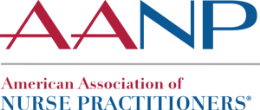Combating Lung Cancer Through Early Detection and Treatment

Nurse practitioners are saving lives by screening for this deadly disease.
Lung cancer is the leading cause of cancer death in the U.S. Studies show lives can be saved through early detection. Fortunately, nurse practitioners (NPs) are at the forefront of efforts to screen for lung cancer — and the related chronic obstructive pulmonary disease (COPD) — as soon as possible.
Observing Lung Cancer Month
Lung Cancer Day was first established in 1995 and later grew into a month-long recognition. Lung Cancer Month is an opportunity to raise public awareness about the causes and prevention of lung cancer and to encourage early detection of this disease. Screening works — “If lung cancer is caught before it spreads, the likelihood of surviving five years or more improves to 60%,” states the American Lung Association. Timing is crucial, and to increase early detection, an NP-centralized program was developed to screen “individuals at higher risk of developing lung cancer with a low-dose computed tomography (LDCT) scan,” as detailed in an article in The Journal for Nurse Practitioners. The results were conclusively positive — when early detection is combined with compliance on behalf of individuals with lung cancer, lives are saved.
The American Association of Nurse Practitioners® (AANP) spoke with AANP Pulmonary and Sleep Community Co-chair Temitope Fowora, DNP, CRNP, FNP-BC, to obtain her expert perspective on the treatment and prevention of lung disease — and lung cancer in particular. Fowora emphasizes the importance of obtaining a patient’s complete history and being proactive about referrals and testing. “Early referral is the key,” explains Fowora. “If someone has a dry cough that is not related to infection and not related to allergies, then getting a chest X-ray may be your first step to see if something is going on. In most primary care offices, they also have something called spirometry. It’s very fast and easy to do — and indicates if the patient has a risk for obstruction or restriction. Getting a patient’s history is another key part. If a person is saying, ‘I’m tired all the time, I’m not sleeping well,’ or ‘I go to sleep and I wake up every two hours,’ that is a red flag. Seeing how long the problem has been going on or recommending a home sleep study is a starter. Any provider can do that — you don’t need to be a specialist.”
Recognizing COPD Awareness Month
November is National COPD Awareness Month in addition to Lung Cancer Month, which is appropriate given how closely the two diseases are related. COPD takes the lives of 152,000 Americans each year, a statistic compounded by the fact that “patients with COPD have two to four times greater risk of incident lung cancer when compared to those who do not have COPD,” as per the Annals of Translational Medicine. Fortunately, “there is evidence that lung cancer screening in this population is effective and can potentially reduce mortality.”
Fowora points out that “right now we don’t really have COPD screening. But I do recommend that if providers have a patient with shortness of breath climbing the stairs or who has a cough that is not going away, they should consider spirometry and they should consider a chest X-ray — these are simple tests that could save someone’s life.” For more about COPD specifically, see this clinical resource tool produced by AANP.
Preventing Lung Cancer
When it comes to preventing lung cancer, Fowora points out that “smoking remains the number one cause of lung problems.” To combat the risks of tobacco use, Fowora recommends increasing education to young adults about the dangers of smoking. “When you’re young — it’s cool, but it catches up with you years later, and then the symptoms are shortness of breath, coughing … all before the diagnosis even comes.” As important as tobacco cessation is, Fowora also points out that exposure to pollutants in certain types of employment also poses a risk to lung health. “People who work in fields like construction or welding, they’re constantly exposed,” she says. “Consistent exposure for a long period of time definitely increases the risk of lung issues in the future. People who have a job that is considered higher-risk should be sure to use personal protective equipment — masks, gloves, shields — just to minimize those risks.”
AANP Resources on Lung Health
Fowora is an expert in pulmonology who shares her knowledge and expertise with AANP members as the co-chair of the AANP Pulmonology and Sleep Community. Fowora recommends the group for any NP, but especially those “working in a primary care setting and who are looking for a specialty.” Fowora tells AANP, “The group is also good for people who are new to the specialties of pulmonary medicine or sleep medicine. It is a community that can provide guidance for new graduates or new members to the specialty.”
Fowora also adds that the group “provides resources to community members, and we provide education and information to anyone who needs assistance or clarification. We are rubbing minds together. For anyone out there in a private care setting curious about pulmonary or sleep medicine, joining this group and community is a good place to start.”
If you are interested in learning more about COPD, AANP offers the continuing education (CE) activity, “Case Studies in COPD: Important Updates for Nurse Practitioners” in the AANP CE Center. The activity offers 2.0 contact hours of CE credit, 1.0 of which may be applied toward pharmacology. AANP members get more, including a 60% savings off the regular cost of this activity.
AANP’s new Course of the Month series provides members free access to one featured CE activity per month, presented by NP experts who are also AANP Community members. This new benefit allows you to earn up to 12 more free CE credits over the course of a year by completing each CE activity during the month it is featured.

